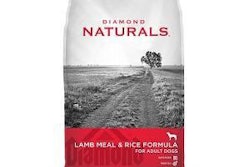
As testament to pet food’s resilience, in 2020 the market weathered not only a global pandemic but also the twin crisis of economic disruption. In fact, pet food didn’t just survive 2020; in general, it thrived.
Globally, the market grew by more than 5% in volume and more than 3% in terms of pricing, according to Euromonitor International. In the U.S., the largest pet food market, sales increased nearly 10%, as revealed in data from the American Pet Products Association.
Pet owners in more developed or affluent regions, while spending more time with their pets during pandemic-driven lockdowns, stocked up on food and treats for them, with some even adding pets to their families. As a result, the premium pet food segment rose about 9% worldwide, Euromonitor said, though the mid-priced and economy segments also saw healthy growth at 7-8%.
Many pet food manufacturers and marketers, including some on the Top Pet Food Companies list for 2020 (p. xx), benefited from the increased pet owner spending. That’s demonstrated by robust growth for some players (see Table 1).
Better data, growth through pet food M&A
The data included in the Top Pet Food Companies database and listings such as in this issue come from a variety of sources, and each year, reliable data to report become more available to the team of researchers updating the database. More accurate data in 2020 accounts for revenue increases for some of the companies listed in the Top 101 Pet Food Companies table on p. XX.
On the other hand, for privately owned top companies like Mars Petcare, Diamond Pet Foods, Deuerer and Wellpet that don’t share their revenue numbers, the researchers have to report their best estimates based on available information, resulting in the revenues for many of these companies in the database staying the same from year to year.
Robust growth shown for some leading pet food players is not solely because of better data being available. For several years, mergers and acquisitions (M&A) have played a significant role in pet food market and individual company growth, and that continued in 2020 despite the crises. For example, Petline’s soaring growth of 119% from 2019 to 2020 was likely from its acquisition of another Japanese pet food company, Nisshin, in early 2020.
Similarly, United Pet Food group has been very active in M&A, with at least three acquisitions in 2020 contributing to its 30% year-over-year (YOY) growth. Nestlé Purina PetCare, in addition to experiencing organic growth, also made a considerable acquisition in 2020, Lily’s Kitchen; and the Vafo Group’s nearly 27% increase in revenues, though partially due to more accurate data for 2020, also resulted from acquisitions made during the year.
Several other companies among the top 101 in the world also grew at least partially thanks to acquisitions, including Spectrum Brands (9% YOY growth) and Partner in Pet Food (7% growth). And a company new to the Top Pet Food Companies list and database arose from a significant 2020 acquisition: C.J. Foods bought American Nutrition, creating Alphia, the 16th largest pet food company globally with US$580 million in revenue for 2020.
Organic growth: pet owners in mature markets spend more
In keeping with overall pet food market growth, several companies in Table 1 saw increased sales due to organic growth. Freshpet’s revenues, for instance, increased nearly 30%, “driven by continued growth in household penetration and buying rate,” the company said.
Other companies growing by 10% or more YOY from mainly organic growth, according to the research, included Kormotech, Laroy Group, General Mills, Perfect Companion Group, MPM Products, Doggy AB, Sopral Group, Aller Petfood Group, Monge and Simmons Pet Food. Despite the pandemic, many pet food companies have continued to invest in new or expanded pet food facilities, and those investments also contributed to their growth. One example is Simmons, which leapt 14% YOY, probably due to a new plant opening and increasing its production and, thus, revenues.
The pet population increases widely reported in 2020 happened mainly in developed markets, according to Euromonitor, as did much of the global sales growth. That’s also reflected in Table 1, with most of the companies listed being headquartered in North America or Western Europe. The exceptions include Petline and Perfect Companion Group in Asia and Kormotech and the Vafo Group in Eastern Europe.


















